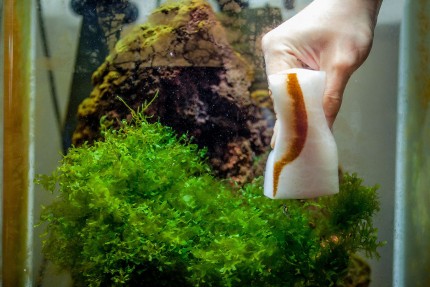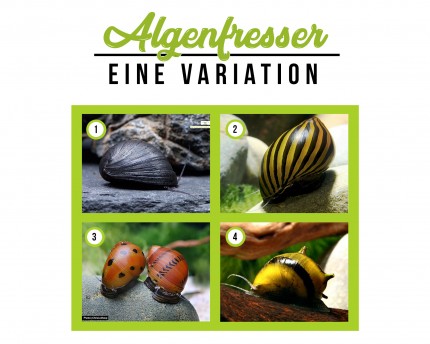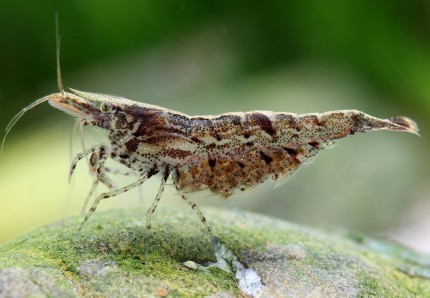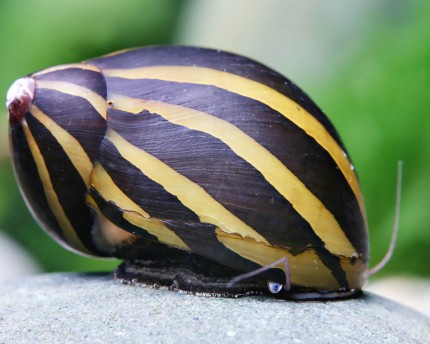Green algae in the aquarium
After the penultimate blog, in which we talked about the basics of algae plagues and about diatoms, today we deal with the broad field of green algae.
All green algae have in common that they contain the green plant pigment chlorophyll. This makes them very similar to higher plants, and for this reason their control is a little trickier and possibly more tedious than the other algae usually encountered in the aquarium. There are unicellular and multicellular green algae.
Let's start with the unicellular ones and work our way up piece by piece.
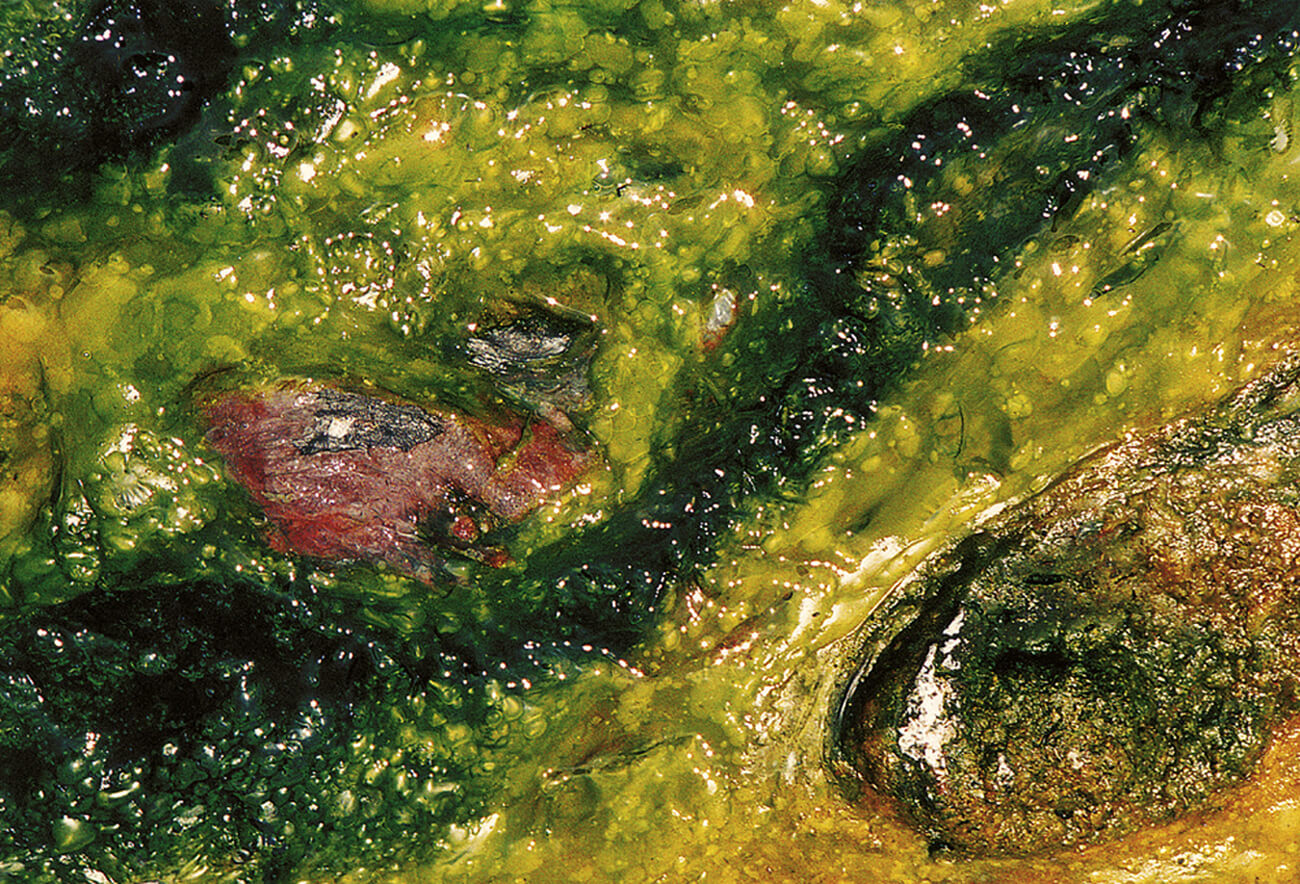
Green floating algae
First and foremost are the green floating algae - they cause the classic algae bloom in the aquarium. Green water indicates an excess of nutrients, often ammonium or nitrate peaks are the reason. You can counteract this nutrient excess with water changes if the reason is not fresh water. You can also simply wait out an algae bloom. Once the nutrients are used up, the algae bloom will disappear by itself. It does not harm the inhabitants in the aquarium to live in green water for a few days, on the contrary. The algae produce oxygen, and they are even eaten quite readily. Often green floating algae belong to the genus Chlorella - this algae is also used in many types of food.
If one does not want to sit out the algae bloom, the use of a UV-C clarifier has proven effective for algae blooms. Here the free algae in the water are killed by the UV light, they then collect in the filter. Once the water is reasonably clear, the filter should be cleaned (with clear cold water only), and we then also recommend a large water change so that the dead algae and the nutrients they have released cannot cause a new algae bloom.
A dark cure of several days will also cause the floating algae to die. Lack of light will harm the algae long before the higher plants, which usually put away even a week in complete darkness without complaint. Also after a dark cure, the filter should be roughly cleaned and a water change should be made. Thereby also suck off the soil a little bit!
In aquariums without technical equipment water fleas can be used excellently for green water. In filtered aquariums they unfortunately die too quickly due to the current. The counter-swimming costs the Daphnia more energy than they can absorb from the food, and they starve to death with a full belly.
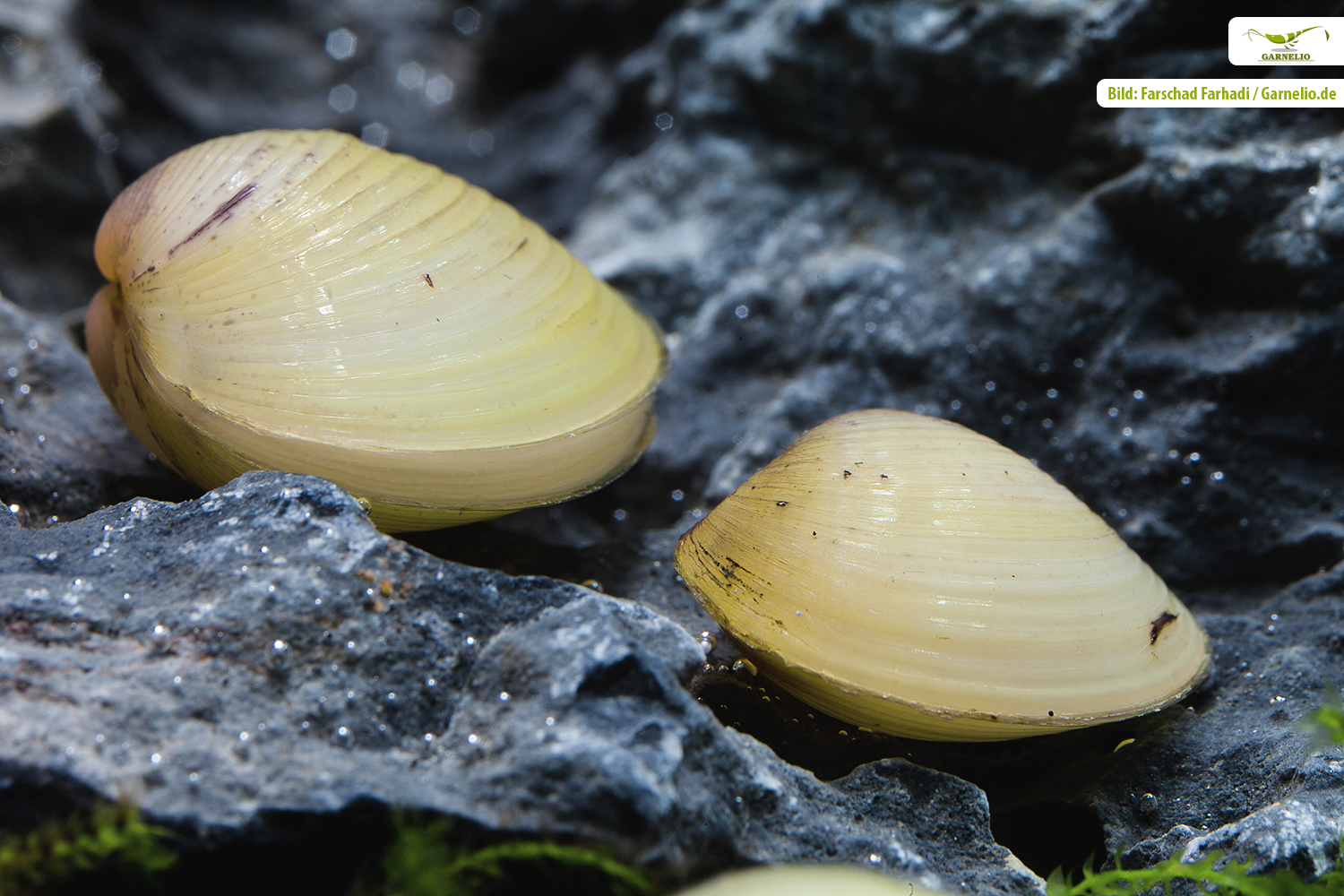
Suspended algae belong on the menu of various aquarium mussels such as the basket mussel
Green disc algae
The green coating on the aquarium panes, which (on the side panes and the back wall) is even welcome in shrimp breeding tanks, because it is an excellent surface for young shrimps - and not only them - to graze on, also belongs to the unicellular green algae. Many shrimp keepers clear the front pane - after all, you still want to see your pets - and leave the coating on the rest of the panes. Magnetic disc cleaners in various sizes are suitable for this purpose. Please make sure that there is no sand in the disc cleaner, even a single trapped grain of sand or gravel can cause really nasty scratches in the aquarium disc! Many aquarists prefer floating magnetic cleaners like the Floaty, and if you've ever had to fish around the aquarium for the inside part that fell off, you understand why they do it. But you can also clean straight glass with a blade cleaner. Be careful at the edges, so that you do not damage the silicone seam! The blade cleaner is not suitable for curved front glass panes, because in addition to an extremely unsatisfactory cleaning result, there can be nasty scratches again. In smaller aquariums an old credit or other plastic card is a harmless alternative, with which one can remove coatings in the best way and does not run the risk of producing scratches.
Alternatively, the use of racing snails, limpets or staghorn snails is almost ideal for green algae deposits on the panes. However, these industrious little animals remove the deposits from all panes, not just the front pane. In a nano tank, for example, a small cleaning column of three Sun Snails is sufficient to keep the panes permanently clean.
Once the coatings have been eaten away, snails that specialize in growth and can hardly be accustomed to fish food should be fed with food specially adapted to their needs (e.g. Natureholic Snail Feed or our Algae Plates ).
In aquariums from 54 l (60 cm edge length), algae-eating fish such as Ancistrus or Otocinclus can be used against green disc algae.
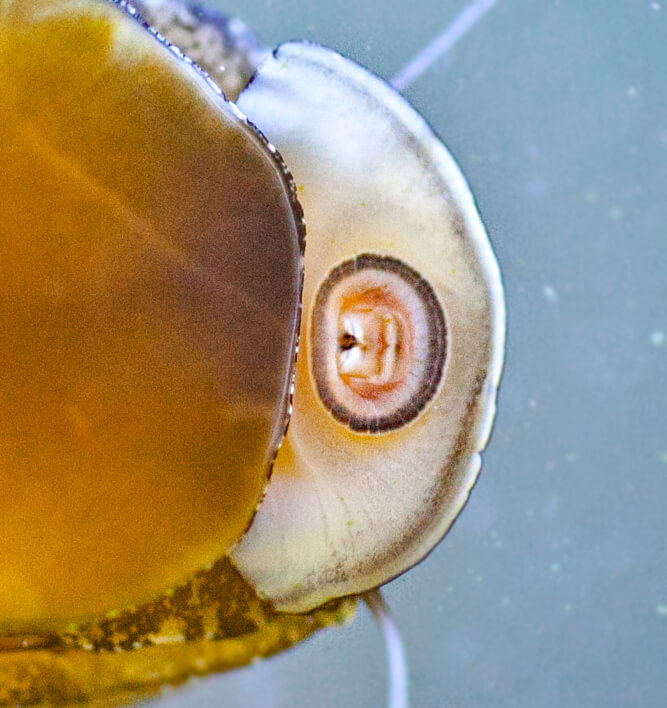
Racing snails & Co. are growth eaters and rasp off disk algae with great care.
Green spot algae
Another type of algae that can be found on the pane, but also frequently on - especially older - plant leaves, are the extremely hard green dot algae. Due to their hardness they are not eaten even by most algae eaters with the exception of the limpet . With a little patience you can scrape these algae from the pane with a blade cleaner (watch out for silicone seams!), when using a credit card you will need a little more force for the green dot algae.
Infested plant leaves can be easily removed.
If green dot algae multiply en masse, one should look at the nutrient balance in the aquarium and check the lighting. If you optimize the conditions for the higher plants, they will deprive the spot algae of their food basis and the infestation will decrease significantly.
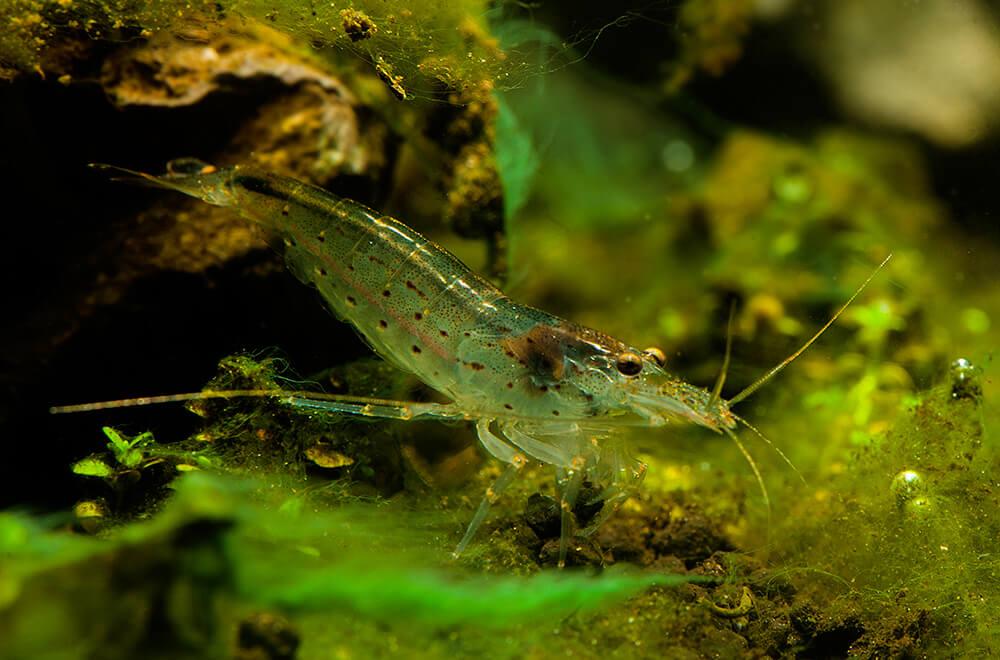
Among all shrimp species, the Amana shrimp is by far the best algae eater!
Fuzz algae, fur algae, thread algae
These are multicellular, relatively short to very long (over 30 cm), fine to solid green algae threads, which can appear on the decoration, plant leaves, but also sporadically on the panes. Their appearance also indicates an imbalance between light, nutrient supply and CO2. Here you should definitely check your fertilizing and feeding habits and also think about the lighting - is it too strong or too weak? It is also advisable to measure the water values, bearing in mind that algae can be highly nutrient-consuming and therefore the water can be absolutely inconspicuous, precisely because the algae infestation is heavy. In any case, it is advisable to keep the higher plants well supplied with an appropriate fertilizer containing micronutrients and iron. Every now and then, a thread algae infestation may even indicate a deficiency in macronutrients. Before using a NPK fertilizer, the water values should be measured exactly.
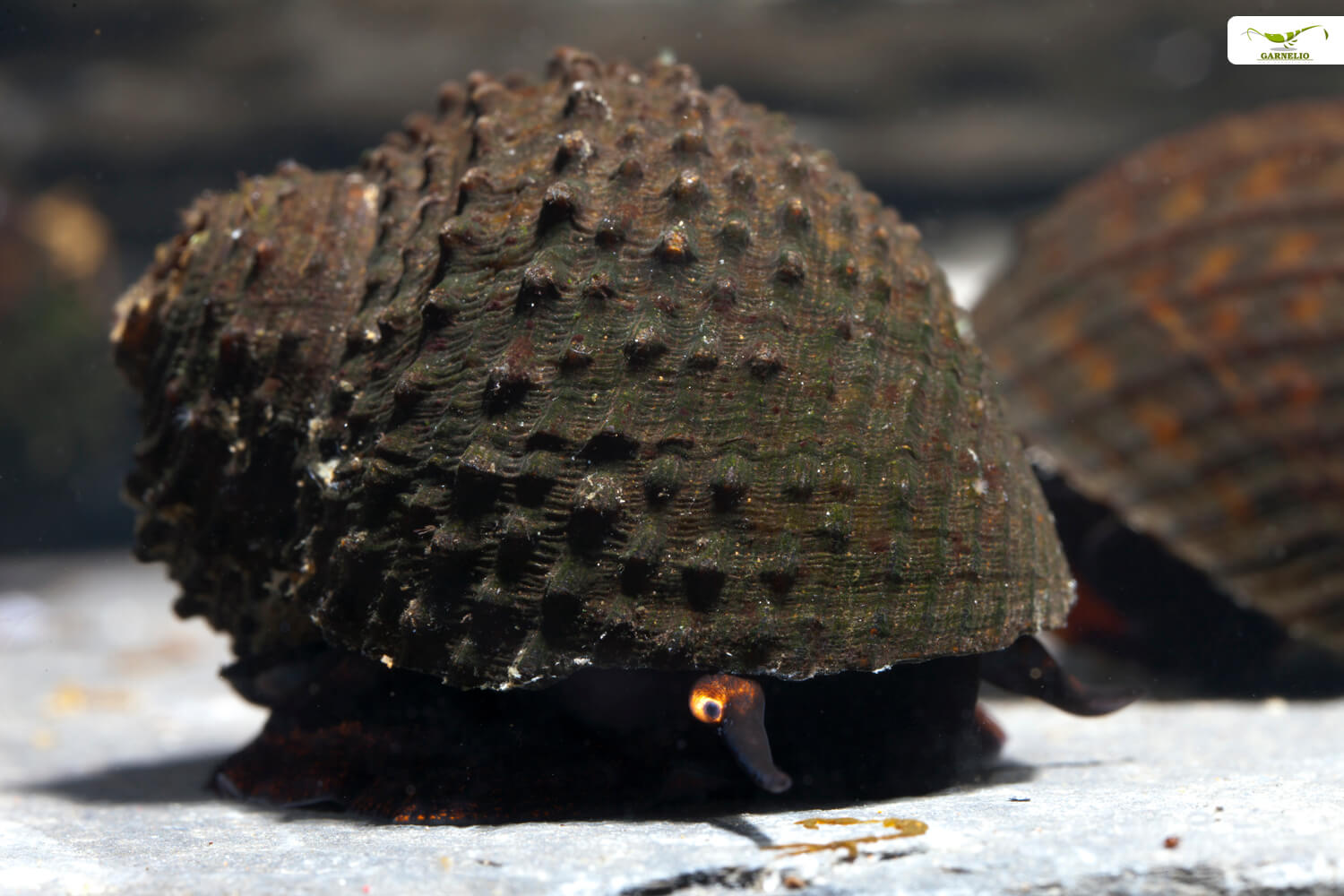
The Bella algae snail originally comes from Sri Lanka. There it lives in flowing larger and smaller waters with little current, where it grazes algae growth from hard substrates such as rocks.
There are few nano-suitable inhabitants that eat lint algae, furry algae and filamentous algae. Dwarf shrimp may take care of very young, emerging algae, but the adult algal filaments are usually too hard for them, unfortunately. Amano shr imps (eat these algae very well, but are only suitable for larger aquariums from 50 cm edge length.
Long filamentous algae can best be wound up and removed with a shish kebab stick or a thin bottle brush (please without detergent residues ...). This way you can get the worst infestation under control. Also the shorter lint algae and fur algae should be taken out of the aquarium, and then provide competition by fast growing plants such as Nixkraut, Wasserpest or Hornkraut . Furthermore, it is crucial for the permanent control of these algae that the conditions for the higher plants are optimized so that they can compete against the algae and thus deprive them of their basis. This includes the supply of micronutrients, macronutrients (nitrogen, phosphorus and potassium), CO2 supply and of course lighting.
In the next blog we will deal with brush algae and other red algae, we would be happy if you look in again.

